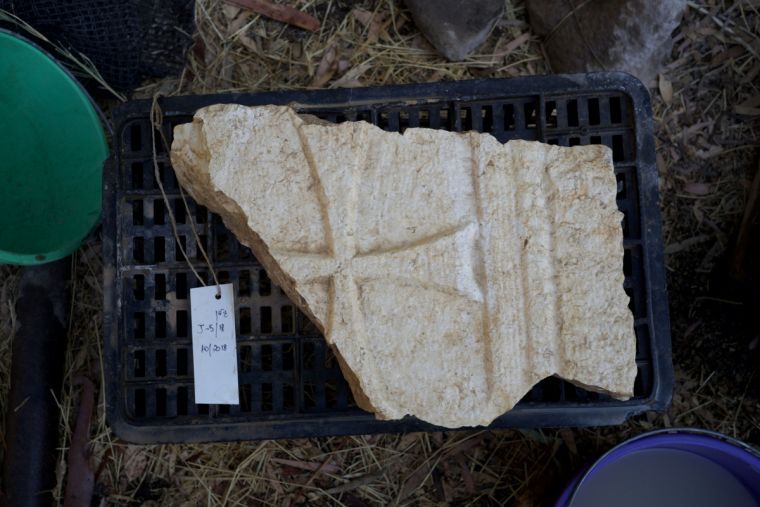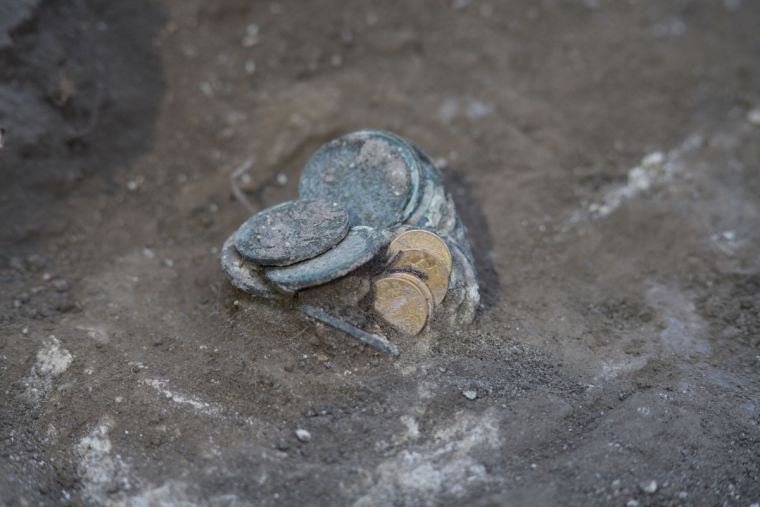The newly-discovered 'church' is neither biblical nor apostolic

Recently, it was sensationally reported that archaeologists had discovered the 'Ancient biblical Church of the Apostles' in el-Araj in northern Israel. This church is "said to have been built over the house of Jesus' disciples Peter and Andrew in the ancient Israeli city of Bethsaida, near Israel's Sea of Galilee". A great claim – but typical for the summer season. It requires deflating almost completely.
What are the facts? The original press release is here. Archaeologists from Israel and the USA have indeed discovered the remains of what was likely a church, and it is in el-Araj near the Sea of Galilee.
The first question: Is this church 'biblical'?
As in, is it from the time of the first Apostles?
The current estimates are that the church was built around the year 500 AD and destroyed or abandoned a few hundred years later. The secure dating of the discovery is greatly helped by the presence of period coins. Coins are almost by definition dated or datable.

The date of c. 500 AD makes it an old church, even ancient, but by no means one that would date back to biblical times. As the last apostles must have died by the year 100, there is a gap of hundreds of years between them and the building of this church.
In biblical times the followers of Jesus did not yet build churches, meeting instead in private homes, synagogues or rented accommodations (e.g. Acts 18:4-7). The oldest known purpose-built church dates from after 200 AD.
The archaeologists also found fragments of a chancel screen that would have separated the congregation from the priest at the altar. This suggests an advanced building because the separation between priest and congregation is a late, unbiblical development.

The second question: Is it apostolic?
To call this building 'the Church of the Apostles' therefore requires some creative use of language. Reference is made to an eighth-century bishop, Willibald, who was the first to mention the existence of this church. Willibald travelled from Germany to the Holy Land as a pilgrim. According to the news release from the Center for the Study of Ancient Judaism and Christian Origins, "On his way, he passed through a place called Bethsaida where he saw a basilica built over the house of Peter and Andrew."
What Willibald actually wrote is: 'And thence they proceeded to Bethsaida, whence came Peter and Andrew. There is now a church where their house was formerly. They stayed there one night...' (see The Hodoeporicon of Saint Willibald from the London: Palestine Pilgrim's Text Society, 1891). The name 'Church of the Apostles' is thus a modern invention which refers not to all apostles, but only to Peter and Andrew.
In one story on the discovery, the church is described as "mentioned by early church pilgrims to the region". Here both the plural "pilgrims" and the label "early" church are wrong, because the 'early' church ends in about 500 AD, making Willibald rather a medieval bishop.
Another report shows even more ignorance by using the terms "a Holy Grail of sorts", "a vital touchstone in Christianity" and "a crucial piece of Christian history". The newly-discovered church is none of these. Its discovery is interesting, but it will form a mere footnote in church history and it will have no effect on the interpretation of the Bible.
The third question: Is it in Bethsaida?
It remains to be discussed if el-Araj, where this newly-discovered church is situated, is the biblical town of Bethsaida. That is by no means certain. Some scholars rather claim that et-Tell, also near the Sea of Galilee, is ancient Bethsaida. The identification of the town is difficult because no-one between 300 and 500 AD ever mentions Bethsaida, not even bishop Eusebius of Caesarea, who wrote about the geography of the area.

One of the explorers of the church, Professor Steven Notley, claims that although the site of the church was indeed unoccupied for about two centuries during the 4th and 5th centuries, the later building of a church there suggests that the Christian community still remembered where the New Testament village had been located. This is a dubious claim, at least as dubious as the claim that we can identify a particular hill in Galilee as the Mount of the Beatitudes. Pious feelings of later generations are not the same as reliable knowledge.
Peter, Bethsaida, Capernaum
In the New Testament Peter and Andrew are not only associated with Bethsaida (John 1:44: "Philip, like Andrew and Peter, was from the town of Bethsaida") but also with Capernaum (e.g. Mark 1:21, 29). That is a difficulty in itself, because John appears to contradict Mark. The normal solution of this problem is to assume that Peter and Andrew had been born in Bethsaida but had at some stage moved to Capernaum. Likewise, Jesus was from Nazareth but ministered from Capernaum (Matthew 4:13); yet he was always known as 'Jesus of Nazareth'. Alternatively, Peter had business in Bethsaida, although he lived in Capernaum, as Bethsaida seems to have been a centre of the fishing industry.
As I have discussed elsewhere, there is ample evidence that Capernaum preserved a much older memory of Peter than Bethsaida. You can read more about my thoughts on that subject here.
Rev Dr Pieter J. Lalleman teaches the Bible at Spurgeon's College; see here for his recent books.











